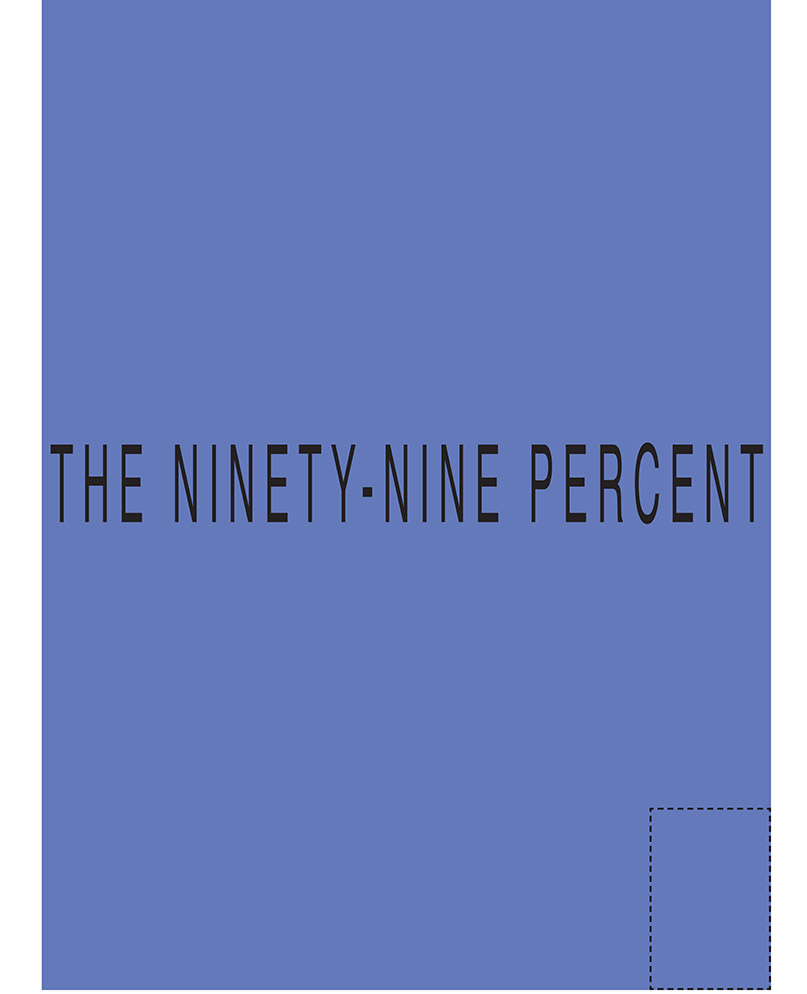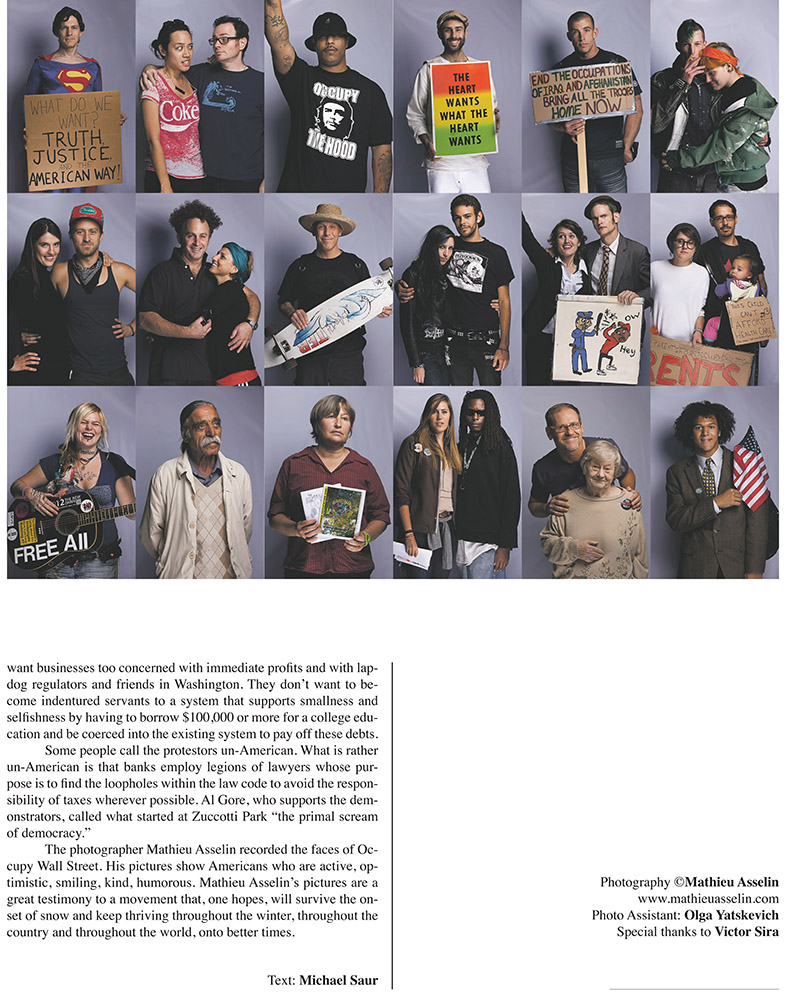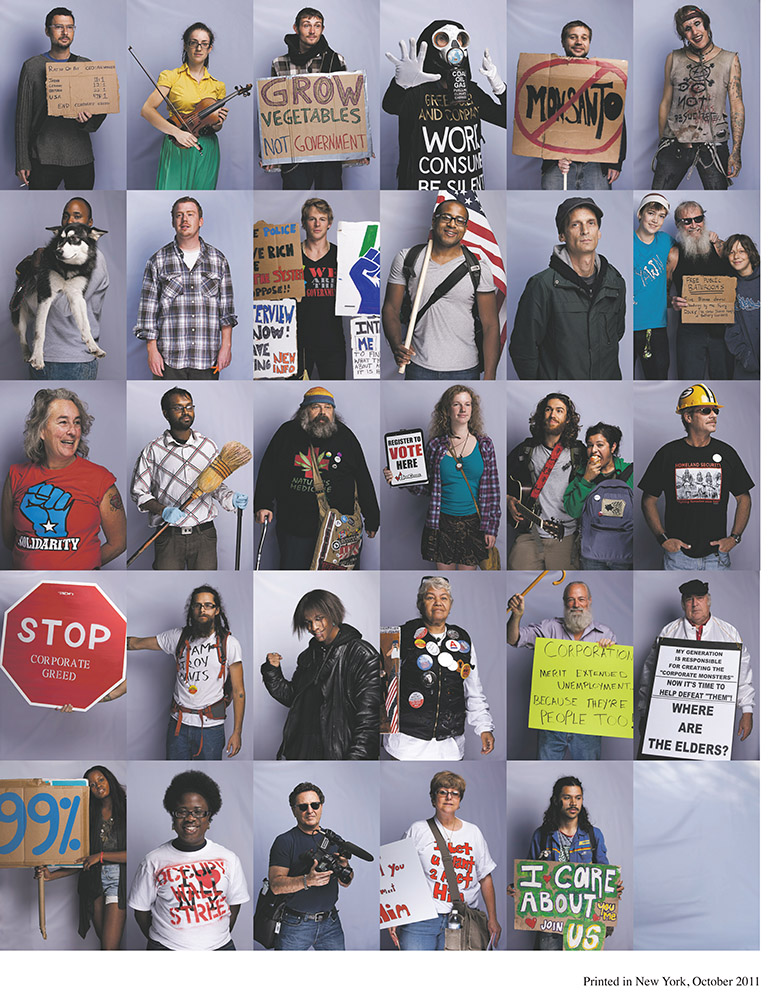The Ninety-Nine Percent
The Work
The Wall Street Protests
In mid-October, New York-based Citigroup announced that its earning rose 74 percent to $3.8 billion. A week earlier, Wells Fargo had announced that its earning rose 21 percent to $4.1 bil- lion, while J.P. Morgan’s earnings had climbed to a staggering $4.3 billion — a lot of money for banks that depended on government- bailouts only three years earlier. The dream of wealth has been a constant engine for America, putting immigrants at work for their off-springs to become lawyers, doctors, and wealthy businessmen. Upward mobility is part of the American psyche as much as tipping for service in a restaurant – and it is a good thing. But something went wrong along the way. It is easy to locate what the protesters from Wall Street are against. The facts, as recently pointed out by the New York Times, speak for themselves: The release of these immense numbers coincided with the movement of recent weeks that has been baptized Occupy Wall Street. It started with a few people putting up tents and signs and camping out at Zuccotti Park near the proverbial Wall Street, where the best and the worst of the United States meet: hope and entrepre- neurship vs. greed and recklessness. Occupy Wall Street has grown to a national phenomenon with similar movements in D.C., Los An- geles, Denver, Miami, Chicago and Boston. - The 400 wealthiest Americans have a greater combined net worth than the bottom 150 million Americans. This movement, born out of economical and political discon- tent, and the old flair of Wall Street with its air of wealth, have more in common than one would think. There is the dream of becoming rich, deeply ingrained into the American psyche with its formula from busboy to multimillionaire, and on the other side the dream of equality and fairness.
According to the CIA ́s own ranking of countries by income inequality, the United States is a more unequal society than either Tunisia or Egypt, countries where revolutions fueled by cronyism and inequality took place this recent spring.
The top 1 percent of Americans possess more wealth than the entire bottom 90 percent.
In the Bush expansion from 2002 to 2007, 65 percent of economic gains went to the richest 1 percent.
But what do the protesters want? Among other things, they want money put back into education and medical care. They don’t want businesses too concerned with immediate profits and with lap- dog regulators and friends in Washington. They don’t want to be- come indentured servants to a system that supports smallness and selfishness by having to borrow $100,000 or more for a college edu- cation and be coerced into the existing system to pay off these debts. Some people call the protestors un-American. What is rather un-American is that banks employ legions of lawyers whose pur- pose is to find the loopholes within the law code to avoid the respon- sibility of taxes wherever possible. Al Gore, who supports the dem- onstrators, called what started at Zuccotti Park “the primal scream of democracy.” The photographer Mathieu Asselin recorded the faces of Oc- cupy Wall Street. His pictures show Americans who are active, op- timistic, smiling, kind, humorous. Mathieu Asselin’s pictures are a great testimony to a movement that, one hopes, will survive the on- set of snow and keep thriving throughout the winter, throughout the country and throughout the world, onto better times. -
Text by Michael Saur
Photo Assistant: Olga Yatskevich - Special thanks to Victor Sira
Self-Published Buy it at:
in the EU info@photoqbookshop.nl - in the USA Bdpress
Selected Exhibitions
Breda Photofestival 2016





